I love finding new products to help the children learn to read. When the older girls were little, I was more apt to come up with my own activities; however, now that I am so focused on our main curriculum, I just don't have the time or energy to put together something of my own. So, when I was introduced to the Learn to R.E.A.D. Curriculum Notebook from The Crafty Classroom I was most definitely interested. Especially because it incorporates some of the same ideas I used with the older girls, such as using word families and slowly introducing sight words. In addition to the main curriculum, we had the chance to review the corresponding R.E.A.D Review Pack which consists of 28 early readers.
Both of these products are downloadable PDF files.
Learn to R.E.A.D Curriculum Notebook
This curriculum is about 800 pages in length. It is a 36 week curriculum in both reading and language arts. Lessons are scheduled for four days out of the week. In the beginning of the book you will find a Curriculum Overview, Daily Schedule, Blends & Digraphs Week Schedule, instructions for the Interactive Notebook, pre-assessment pages, and a description of each of the daily activities, including pictures of what each type of page looks like.
Here is an example
The Daily Warm Up plus each of the Daily activities are fully explained on these pages. The Calendar and Daily Warm up includes writing first and last name, number of the day, plus time and weather. These are to be done every day. Then, each day of the week has unique activities in the following topics: Reading, Language, Handwriting, Activity/Game, and Sight Word.
On Mondays we are introduced to the new word family with the colored"I Can Rhyme Chart," which has the word family ending with several labeled pictures. The child then uses the "Letter Sound Chart" to blend the sounds together for the word family. For example blending /a/ and /m/ to make "am" or /a/ and /t/ to make "at." The child then completes the handwriting page which contains several words in the word family. The activity for Monday is the Playdough Mat which can be used in a variety of ways, we have used it specifically for playdough so it can be reused. There are also word cards which we have used as flashcards.
On Tuesdays the child is to use the "Sound it Out" page to review the sounds, practice blending them, and deconstruct them by picking out the first, middle, and ending letter for phonemic awareness. There is then a grammar page to go in the Interactive Notebook. The handwriting assignment is also a fun word search (which Harold loves). There is also more handwriting practice with the "Spinner Winner" game. Tuesday's sight word work is a dot painting and dot-to-dot activity.
Wednesday's reading activity is called "Read & Respond" where the child reads sentences and then has to circle the word (out of a choice of two) that goes with the picture. There is also a short sentence to write. Then the child gets to glue letter tiles under pictures to build words. Handwriting is practiced with the fun "Nonsense Words" page, where the child is to take several letters and add them to the word family ending. The resulting "word" is then added to the "Real Word" or "Nonsense Word" column. The activity for the day is the "Find & Color" page which consists of the word family template which is filled with black and white images. The child is to find the images that end with the week's word family. Then they are to write three of the words on the lines. For sight words there is maze. The sight words are found inside the maze and the child has to follow the path which will allow them to "catch" all their sight words.
On Thursday, the final day of the week, the child has a "Story Reader" which is comprised of four pages, which includes a cover/title page. This short story includes only words the child has learned, focusing on the word family words plus sight words. As more word families are learned throughout the year, more words will be included in these stories. The language activity is another interactive grammar page. For handwriting, the child will have a simple, guided writing prompt which can then be cut out and added to the Interactive Notebook. The activity for the day is a Word Family Crown. And finally, for sight words, the child looks at the second sight word of the week and has some fun with it, counting how many letters, syllables, vowels, and consonants it has, plus writing a word that rhymes with it, and writing it backwards.
Every fifth week there is a Blends/Digraphs Week. This allows the child to learn additional sounds to add to the word families. This schedule is different in that there is a new blend each day. So, for each day's reading the child is to use the blend chart, which is like the "I Can Rhyme Charts" from the word family weeks. Then there is a page where they are to blend to read, like the blending of the sounds on the "Letter Sound Chart" but actual words are read and then written. There is a "Find & Color" sheet which not only includes finding pictures that include the blend, but also have blends printed around the page for the child to find and circle the correct one.
There are also two activities that alternate during the blend/digraph weeks. On Monday and Wednesday there are "Draw and Write" pages, plus "Science Sequencing" pages. On Tuesday and Thursday there are "Nonsense Word" pages and "Sort it Out" pages.
This blend/digraph week also utilizes the other product we received, the R.E.A.D Review Pack.
These early readers can be used alone or as a part of the curriculum. They are designed to be read every fifth week, after a group of four word families. As new blends/digraphs are taught during this week, the stories can also include words that have these blends/digraphs. There are four new books each review week for a total of 28 early readers.
Each book prints out on three sheets of paper and, once it is cut out, contains 12 pages.
The first page of each book contains a box to review the word families and a box to review the sight words learned over the past four weeks.
The remaining pages contain the story, told in short, easy to read sentences. The pages of the earlier books have 1-2 sentences per page.
By the end of the curriculum the children are reading longer stories, with smaller font, and 3-5 sentences per page.
How did we use the Learn to R.E.A.D. Curriculum Notebook and the R.E.A.D. Review pack?
I'm glad you asked.
I have been printing out a week's worth of work (one word family) at a time, and adding it to Harold's binder. The teacher information is in the front pocket and he has a zippy bag for his flashcards. As we didn't have a notebook to use as an Interactive Notebook for language arts, I created a separate section at the back of the binder out of card stock. We just glue his grammar work on those pages, along with his writing prompt work.
Harold starts out his school time by working on the Calendar and/or the Daily Warm Up. As it is the summer, and we haven't been having official school days until recently, I figured he didn't need to do these every day.
I print out one calendar page per month and then write in the month and year at the top, plus the date up through the current date. I then put it in a plastic cover. Harold is responsible for tracing the dates and writing what today is at the bottom of the page.
I love the Daily Warm-Up page because it gives him a little bit of math as well. We work on a number of the day. First he writes the numeral, then he has other ways to explore the number: tally marks, ten frame, money, writing the number word, and figuring out one more, one less, and ten more. He's actually impressed me when it comes to that. He has been able to answer the "ten more" correctly almost every time.
I love that we have been able to look at different coins and work out what each one is worth, exchanging money when needed.
Then there is time, both analog and digital, to work on. I show him the time on my phone, he writes that first, and then we work out the analog clock together, practicing counting by 5.
And he gets to look out the window to check the weather, plus look at the thermometer to see what the temperature is.
Moving on to the reading portion of the curriculum.
He starts each week by working on the handwriting page. I have tried to encourage him to write neatly by telling him he will only have to write the word a couple of times if he does so. If I notice he is struggling with a specific word or letter, I have him write extra. There are actually quite a lot of chances to work on handwriting in this curriculum, which is actually his least favorite part, so I pick and choose which ones he has to do, sometimes mixing up the week's work so he doesn't have to do so much writing per day. Though he isn't too fond of the handwriting, I am delighted to say that it is helping him to write more neatly.
I love that there are multiple ways to work on forming words. In addition to the handwriting, he gets to form letters out of playdough:
and glue tile letters underneath pictures:
And I think one of his favorite ways has got to be the dot letters and dot-to-dot sight word pages. We use markers or q-tips with paint for him to dot the word.
In fact, I print out extra of this page because Hannah likes to use it as well.
Even using the Word Finds give him a chance to form the words.
I also appreciate that he has the opportunity to deconstruct the words with the "Sound It Out" pages. He has to say the word that is pictured and circle the correct beginning, middle, end letter. This is after he blends the sounds together to read and find the word.
Here's a look at a finished week. He was quite proud of his work.
In fact, he LOVES those crowns. He's been known to wear it when we go out to the store or the library. He also thinks it is quite fun to wear more than one at a time. But, he can't get very far with them balanced on his head.
We are currently on the first blend week. During this week Harold is learning the blends "bl" "fl" "gl" and "sl."
Here is a look at one day's worth of blend work:
He is also reading the readers for week 5.
Additionally, he is getting an introduction to simple grammar concepts in an interactive way.
The Learn to R.E.A.D Curriculum Notebook and R.E.A.D Review Pack combine to make a wonderful learn-to-read program plus so much more. I love that it uses word families, having to add the beginning sound onto the ending that is the same for all the words they are learning at the time, which also helps them learn about rhyming. The inclusion of a couple of sight words a week is great because they child gets to learn words that don't follow the phonics rules but are needed for sensible beginning sentences and stories.
I love the way the program is structured, and that there is a combination of worksheet assignments and hands-on manipulative work.
I also appreciate that it is much more than just a reading program. Harold is getting to practice his handwriting, plus work on math, some simple science concepts, grammar, and creative writing.
I highly recommend this program for young children who know their letters and sounds, those who are ready to start blending the sounds together to form words and sentences.
The Crafty Classroom offers a lot more than just these Reading products. In fact, my fellow Crew Mates have been reviewing a variety of materials. There is an Alphabet Curriculum Notebook, and a Bible ABC Curriculum Notebook for preschoolers, plus a USA Activity Bundle, and How to Write a Paragraph for older elementary children. Click on the banner below to check out the reviews of these different products.





















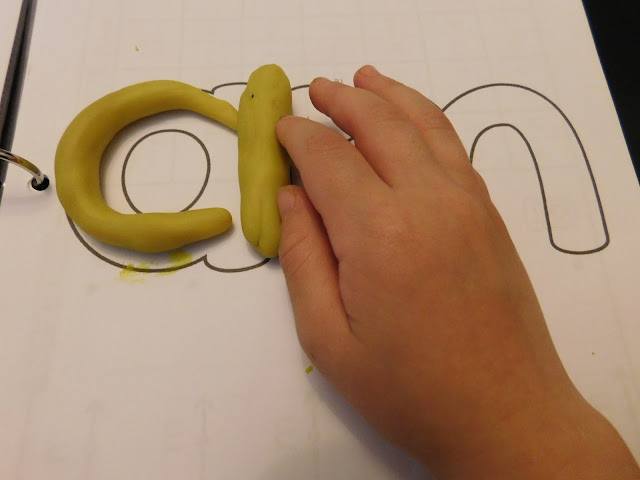



















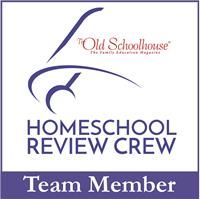
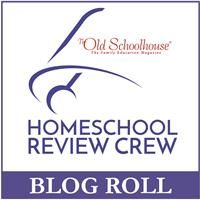













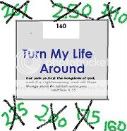
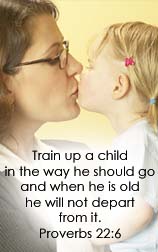



![[PREMIO2009.png]](https://blogger.googleusercontent.com/img/b/R29vZ2xl/AVvXsEjXD_Gx-wZ9EM5hXKrEYLksEBkYfRQtmb8VDVTDG_yyLggQoFIstZsh4zszdG20KqErZicRzEhiNYLty7j3IMXJYsABqkXjr8pp-ncj71xCbpxlXGbGpZq2fTuDQqq1RMKV4DPcDBnBViA/s1600/PREMIO2009.png)
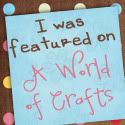
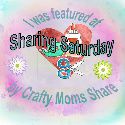


No comments:
Post a Comment
Thank you for visiting my blog today. I love to read your comments, so please leave me one if you have the time.
Blessings